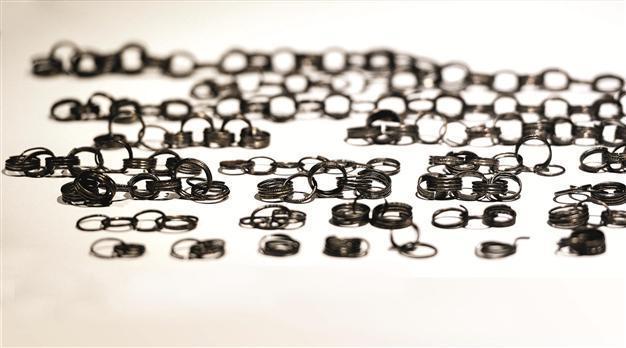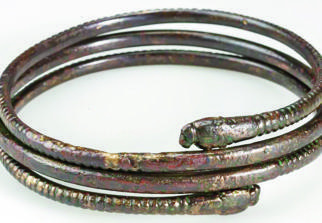Rezan Has Museum opens Urartian jewelry collection to public
ISTANBUL – Hürriyet Daily News
 Showing off the glory and wealth of the ancient Urartians, a new exhibition has opened at Istanbul’s Rezan Has Museum featuring around 1,110 items of jewelry from the civilization, which inhabited what is now eastern Anatolia during the Iron Age.
Showing off the glory and wealth of the ancient Urartians, a new exhibition has opened at Istanbul’s Rezan Has Museum featuring around 1,110 items of jewelry from the civilization, which inhabited what is now eastern Anatolia during the Iron Age.Thanks to a grant from Bank of America Merrill Lynch as part of their global Art Conservation Project, the museum’s collection of Urartian jewelry is considered one of the most comprehensive in the world.
The exhibition showcases a broad variety of jewelry that belonged to the Urartian Kingdom, a civilization unique to Anatolia. The collection included pins, rings, earrings, bracelets, fibulas, belts and belt pieces, votive plaques, armbands, neck collars, necklaces, hair spirals and pectorals which were created in the middle of the ninth century B.C. Additionally, 74 belts, conserved under the expertise of Professor Rafet Çavuşoğlu, will be on view.
“With a large collection of archaeological artifacts extending from the Neolithic Era to the Seljuk period, the Rezan Has Museum spent the last year completing the restoration and conservation of more than 1,000 pieces of jewelry from the Urartian period with the contributions of Bank of America Merrill Lynch,” Kadir Has University Chairman of the Board of Trustees Can Has said at a recent ceremony to open the exhibition.
“Having been selected to be part of the same project as globally acclaimed museums including the Metropolitan, Louvre, Hermitage, and the British Museum is a source of pride for all of us. We are thrilled to share with you the Urartian Jewelry Collection,” he said.
 Urartian Jewelry from Rezan Has Museum Collection
Urartian Jewelry from Rezan Has Museum CollectionThe Rezan Has Museum Collection, which has the most comprehensive inventory of Urartian pieces, includes approximately 1,100 artifacts.
The Urartian Kingdom, which was rich in mineral deposits, forged bronze, gold, silver and iron with great artistry. Craftspeople used objects like belts, necklaces, bracelets, arm bands, neck collars, pectorals, pins, fibulas and earrings both as ornaments and as objects with religious functions.
Through the restoration of the belts in particular, several previously unknown characteristics were discovered with figurative, geometric and herbal ornaments in Urartian art.
The ornamental belts include some important data like rich scenes from Urartian art, the aesthetic values of the period, class distinctions and the religious functionality of the belts.
The Urartians’ successful administration meant that they survived for about 250 years. It is not known what kinds of symbols were used to differentiate the status of state officials during the time, but the belts, along with other pieces of jewelry, are presumed to have played an important role. Furthermore, the religious depictions on the metal belts used widely by the Urartians were likely to have been engraved for personal protection against evil, as well as for courage and strength.
The exhibition can be visited until July 31, 2015, at the Rezan Has Museum at Kadir Has University’s Cibali campus alongside the Golden Horn in Fatih.
















